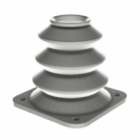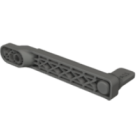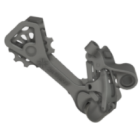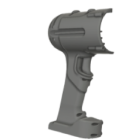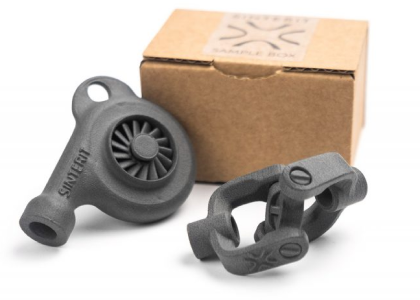Sandblasting 3D prints: a fast and consistent finishing method
Post-processing is a vital part of the additive manufacturing workflow — and when it comes to finishing polymer parts, sand blasting 3D prints is one of the most efficient ways to achieve a uniform, professional surface. This technique, also known as abrasive blasting, involves propelling fine media at high speed to clean, texture, or smooth the outer layer of a printed part. It’s fast, scalable, and compatible with most powder-based and extrusion-based technologies, making it a go-to solution for industrial users and professional print bureaus.
Should you sandblast 3D printed parts?
Yes — and in many cases, you absolutely should. Sandblasting is widely used to remove residual powder (especially in SLS and MJF parts), dull sharp layer lines, and create a matte finish with consistent texture. It’s also effective for preparing surfaces for dyeing, painting, or vapor smoothing.
The process is especially suitable for nylon (PA12) and other engineering polymers that can withstand mild abrasion without distortion. While FDM parts can also be sandblasted, they tend to show less consistent results due to layer adhesion and material softness — but for PLA or PETG prints, gentle blasting can still visibly reduce printing artifacts.
For SLA parts, care is needed: brittle photopolymers may crack or chip if exposed to overly aggressive media or pressure.
The sandblasting process: how it finishes 3D printed parts
The part is placed inside a blast cabinet where compressed air propels a fine abrasive — such as glass beads, aluminum oxide, or plastic granulate — through a nozzle aimed at the part’s surface. The blast media strips away loose powder or superficial roughness without affecting geometry or structural features.
The operator controls blast intensity, media type, and nozzle distance depending on the material and finish required. Finer media and lower pressure are ideal for delicate features or thin walls; more aggressive setups are reserved for robust engineering components.
It’s worth noting that sandblasters — compact, desktop-friendly systems designed specifically for additive workflows — have grown popular in recent years, offering closed-loop powder recovery and process consistency. These are commonly used in service bureaus, R&D labs, and production environments where throughput and repeatability matter.
Smoothing 3D prints: sanding vs. sandblasting
If you’re wondering “Can you sand 3D prints smoothly?”, the answer is yes — but the method depends on the material and scale. While hand sanding is time-consuming and best suited to small details or isolated flaws, sandblasting offers a faster, more even finish across complex geometries. For parts printed with visible layer lines, like FDM or SLA, combining blasting with light manual sanding can result in impressive surface refinement without the need for filler or chemical smoothing.
Why sandblasting is ideal for 3D print post-processing
Sandblasting offers several advantages over other post-processing methods:
- speed: entire parts can be processed in seconds to minutes,
- consistency: uniform finish even on complex internal and external geometries,
- no solvents: a dry process, safe for sensitive materials,
- scalability: easily automated for production runs,
- improved surface prep: enhances paint or adhesive adhesion.
Additionally, in multi-jet fusion workflows, blasting is essential for depowdering and for achieving the clean, matte black finish that defines high-quality PA12 parts.
Conclusion: sandblasting as a scalable post-processing strategy
Sand blasting 3D prints is a highly effective post-processing method that enhances part appearance, function, and consistency without compromising dimensional integrity. Whether you’re removing residual powder, prepping for secondary finishes, or simply refining surface quality, sandblasting offers a scalable, repeatable solution that fits seamlessly into industrial additive workflows. For professionals working with SLS, MJF, or even robust FDM materials, it remains one of the most valuable finishing techniques available.
Explore also
- Removing supports from 3D prints
- Sanding 3D prints
- Polish 3D printed
- How to fill gaps in 3D prints
- Priming 3D prints
- How to paint 3D print
- How to foiling 3D prints
- How to metal plating 3D print
Related categories




